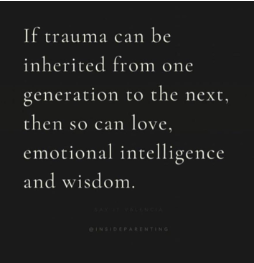When a person experiences a traumatic event, it’s natural to want to avoid anything that reminds them of that experience. This avoidance can extend to thoughts, feelings, people, places, or situations that stir up memories of the trauma. While this may feel like a useful strategy in the short term, chronic avoidance can inadvertently reinforce trauma symptoms, particularly in the context of Post-Traumatic Stress Disorder (PTSD).
What is Avoidance?
Avoidance is a psychological term that describes the act of steering clear of distressing situations, emotions, or thoughts. In the context of trauma and PTSD, avoidance can manifest in many ways. For example, a person might avoid crowds or getting too close in relationships after experiencing a traumatic event, or they might suppress thoughts or feelings related to the trauma. Avoidance can provide temporary relief from distressing symptoms, creating a cycle that can be challenging to break. The immediate relief of distress reinforces the avoidance behavior, making it more likely to occur in the future.
How Does Avoidance Reinforce Trauma Symptoms?
When a person consistently avoids trauma reminders, they miss out on opportunities to process the traumatic event and to challenge or change their reactions to it. Avoidance keeps the person stuck in their fear, as they never get a chance to learn that they can handle the distress or that not every reminder of the trauma is as dangerous as it may seem. This can lead to a vicious cycle where the person continues to avoid reminders of the trauma, reinforcing their fear and maintaining their trauma symptoms. The avoidance behavior can also spread to other areas of life, leading to a decrease in quality of life and relationships and an increase in feelings of anxiety, isolation, and shame.
Emotion-Focused Therapy: A Path Through Avoidance
Emotion-focused therapy (EFT) offers a way out of this cycle. It asserts that our emotions are not inherently bad or harmful. They are normal responses to our experiences, including traumatic ones. EFT is a therapeutic approach that values emotions as important data, sees emotional change as central to lasting change, and promotes emotional awareness, expression, and transformation. In EFT, the therapist can help a person work through emotions that may have previously felt too uncomfortable, dangerous, or shameful to feel. By exploring and understanding emotions in a safe and supportive environment, people can gain insight into patterns that have become problematic, process traumatic experiences, and finally shift their responses.
How does EFT can help break the cycle of avoidance?
Building Emotional Awareness
One of the first steps in EFT is to build emotional awareness. This involves viewing emotions, even negative ones, as a source of information rather than something to fear and avoid. It’s common for people who have been through trauma to experience a disconnect from their feelings, often as a result of long-term avoidance. By building emotional awareness, a person can begin to reconnect with their feelings. This may look like learning to identify and name emotions as they arise in session, noticing and describing body sensations, and beginning to understand the links between thoughts, feelings, and actions. It also involves appreciating how our past experiences have shaped our current emotional responses and interactions.
Encouraging Healthy Emotional Expression and Regulation
Once a person can identify their emotions, the next step is learning to walk towards them rather than running in the other direction. This usually involves talking about and experiencing previously avoided feelings in a way that feels safe (with the help of a therapist!). The act of processing and regulating, rather than avoiding, emotions can help to reduce their intensity and the hold that trauma triggers have had on a person’s life. An emotion-focused therapist works to carefully attune to emotions and identify what is getting in the way of healthy regulation.
Transforming Emotional Responses
Perhaps most importantly, EFT aims to help individuals transform their emotions and responses. For example, instead of reflexively avoiding an interaction that triggers feelings about the trauma, a person might learn to slow down and acknowledge and explore their initial fear and how it feels in their body. This exploration allows for the opportunity to not only validate and soothe the fear, but also determine how to best meet underlying needs that unfortunately went unmet at the time of the trauma. Learning what these needs are and how to meet them can increase current feelings of safety, wholeness, and competence. As this new, more adaptive response to the trauma reminder is strengthened, the old, outdated reaction is weakened and it becomes easier to shed behaviors that have long gotten in the way of recovery.
A crucial part of EFT is the therapeutic relationship itself. This therapist helps create a space where the person can explore and express their emotions without fear of judgment or rejection. When a safe and comfortable environment is established, it is easier to face feelings and patterns that have felt too overwhelming to figure out alone.
Living with trauma and PTSD can be an incredibly painful experience. However, with the right therapeutic support and approaches like EFT, it’s possible to navigate through the cycle of avoidance and find a path towards healing. Remember, it’s okay to reach out for help, and it’s okay to confront the emotions tied to your trauma. Overcoming avoidance can be a challenging and complex process, but our emotional well-being is always a worthwhile journey.
For more information about the impact of early life trauma, What Happened to You?, may be a helpful read. To learn more about EFT and the science of attachment, the International Centre for Excellence in Emotionally Focused Therapy offers additional information and resources.
If you’re feeling ready to begin your trauma healing journey, connect with a TBCRP therapist to schedule an appointment and get started.





2 thoughts on “Understanding Avoidance in Trauma and the Role of Emotion-Focused Therapy”
This article provides a lot of valuable information—well done!
Your blog is a constant source of inspiration for me. Your passion for your subject matter is palpable, and it’s clear that you pour your heart and soul into every post. Keep up the incredible work!